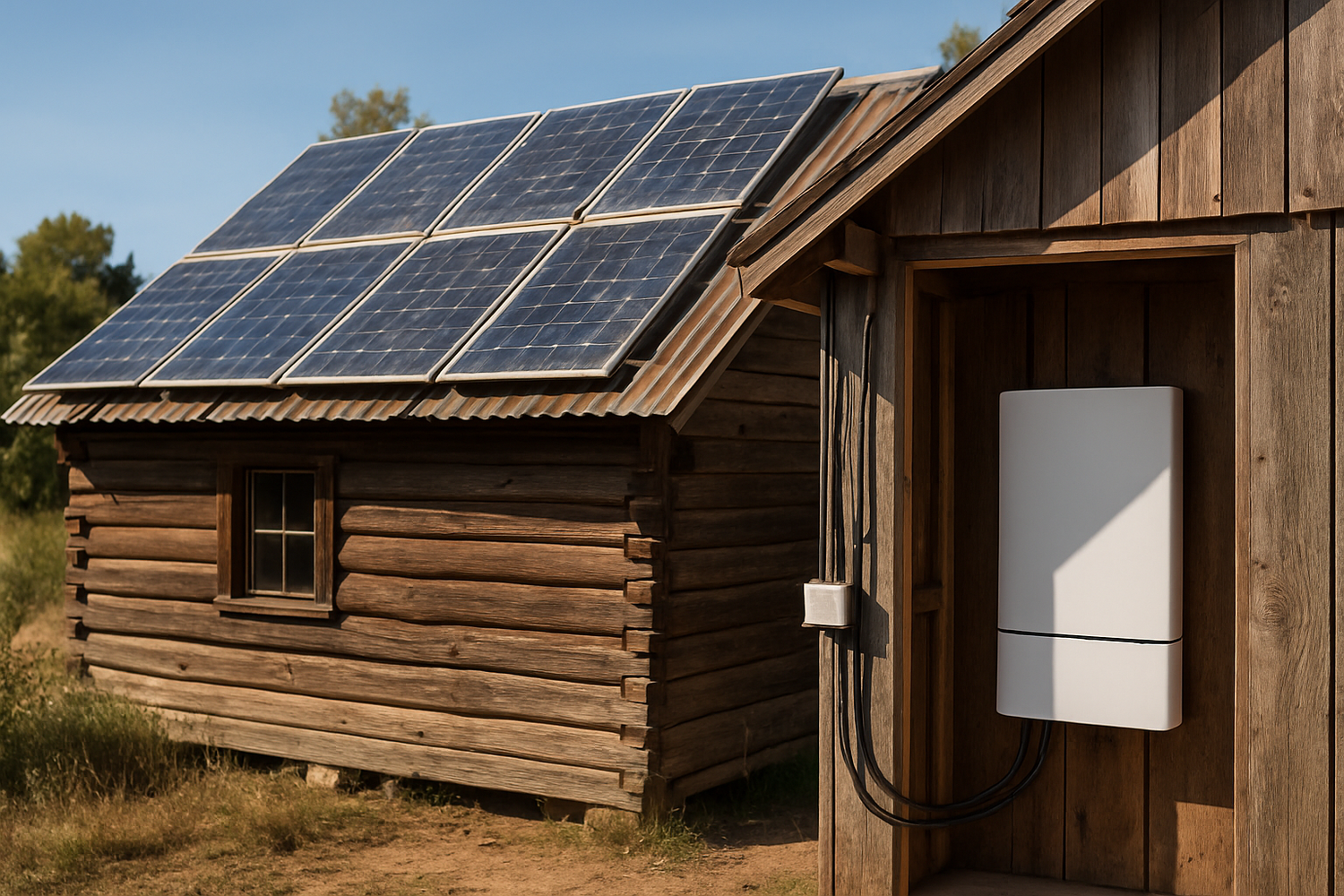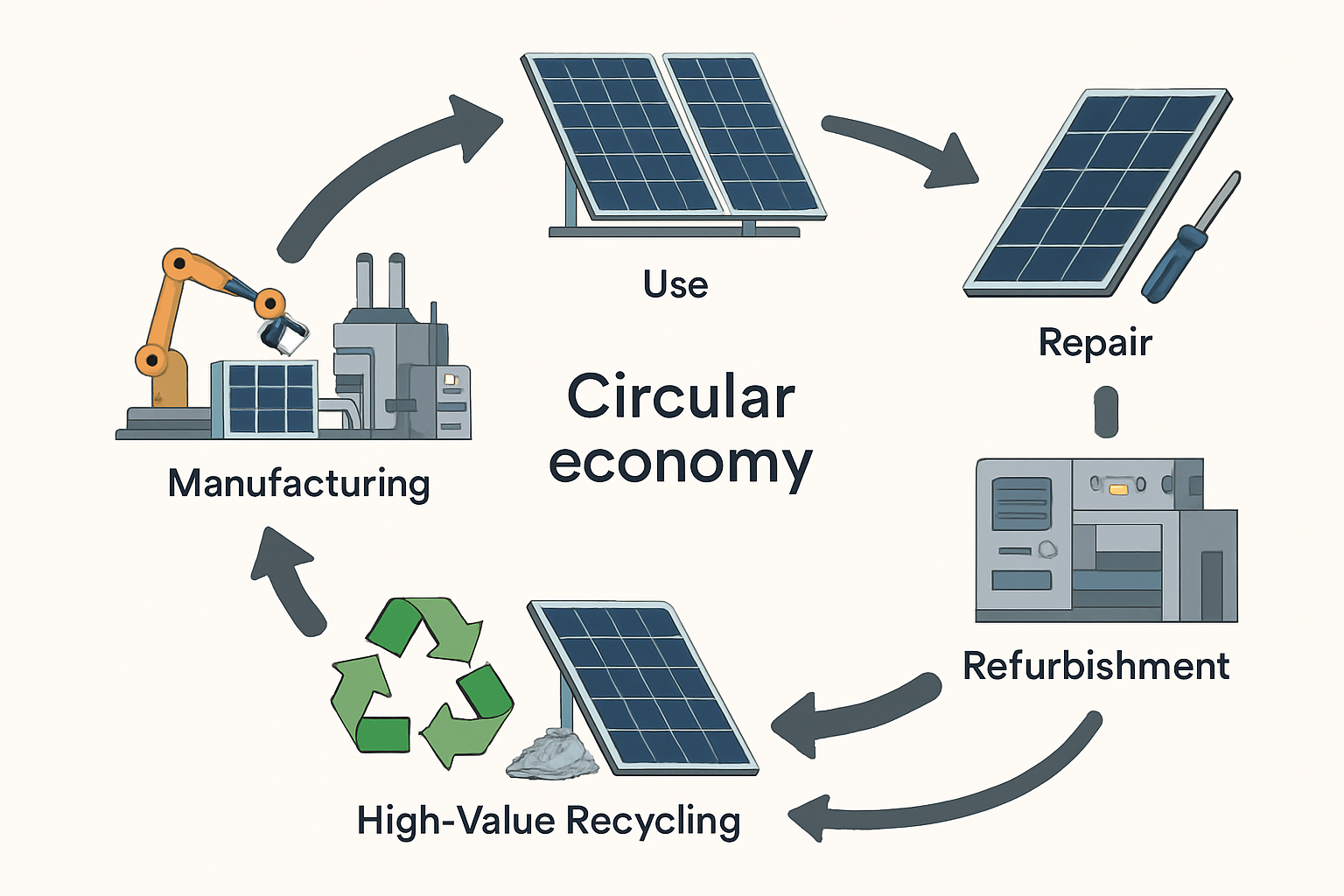The rapid growth of solar energy brings a looming challenge: what happens to millions of panels at the end of their initial service life? Many are destined for landfills, creating waste and losing valuable resources. There is a more intelligent, sustainable path forward. Reusing these functional panels in off-grid Energy Storage Systems (ESS) gives them a second life, creating significant value and building a true circular economy for energy storage.
The Growing Challenge of End-of-Life Solar Panels
Solar panels are remarkably durable, but they are not immortal. As the first wave of large-scale installations reaches maturity, the volume of decommissioned panels is set to increase dramatically. Understanding the reasons for this and the alternatives to disposal is critical.
Why Panels Are Decommissioned
Panels are typically removed from service for a few key reasons. Some may have minor damage from weather events. Others are replaced during technology upgrades, where property owners opt for newer, more efficient modules. The most common reason is gradual power degradation. A panel might only produce 80% of its original rated power after 25 years. While this may not be optimal for a large utility-scale project, the panel remains a viable source of electricity.
The Environmental Cost of Landfilling
A solar panel is primarily composed of glass, aluminum, and silicon—all of which are recyclable. However, they also contain small quantities of other materials. Landfilling panels locks these resources away permanently. This approach contradicts the sustainable principles that drive solar adoption. The energy and materials required to manufacture a new panel are substantial, making the disposal of a still-functional unit a significant waste.
Reuse as a Superior Circular Strategy
The waste hierarchy prioritizes strategies in order of environmental preference: Reduce, Reuse, Recycle. While recycling recovers materials, reuse extends the entire product's functional life. This avoids the energy-intensive process of breaking down a panel and manufacturing a new one. By redirecting panels into new applications, you directly reduce demand for new products and minimize waste, a core tenet of the circular economy.
The Perfect Match: Second-Life Panels and Off-Grid ESS
Off-grid applications represent an ideal destination for second-life solar panels. These systems are often designed for specific, limited loads and are highly sensitive to upfront costs, making reused panels a perfect fit.

Why Off-Grid Systems Are Ideal
An off-grid system for a remote cabin, farm, or monitoring station does not always require peak efficiency. The primary goal is reliability and energy independence. A panel operating at 80% of its nameplate capacity can still effectively charge a battery bank. The lower cost of used panels makes solar energy accessible for applications where it might otherwise be financially impractical. According to research on renewable energy integration, flexible and decentralized systems are key to a resilient energy future. As noted in the IEA's Status of Power System Transformation 2018, matching generation to specific loads is a cornerstone of efficient system design.
Key Components of a Reuse-Focused Off-Grid System
Building a reliable off-grid system with used panels requires four main components:
- Second-Life PV Modules: The core energy-generating asset, acquired at a fraction of the cost of new panels.
- Charge Controller: An MPPT (Maximum Power Point Tracking) charge controller is highly recommended. It can optimize the power output from panels that may have varying levels of degradation, ensuring you get the most energy possible.
- Battery Bank: A high-quality battery is crucial for storing energy. Lithium Iron Phosphate (LiFePO4) batteries offer a long cycle life, high safety, and deep discharge capabilities, making them an excellent match for the longevity of reused panels.
- Power Inverter: A reliable inverter converts the DC electricity stored in the batteries into AC electricity to power standard appliances and electronics.
Technical Considerations for Building with Reused Panels
Successfully implementing a panel reuse strategy requires attention to technical details. Proper assessment and system design are necessary to ensure performance and safety.
Assessing Panel Health and Viability
Before integrating a used panel, perform a thorough visual inspection. Look for cracks in the glass, signs of water ingress, or browning of the cells (a sign of heat damage). Check the junction box on the back for secure connections and integrity. A simple performance test involves measuring the open-circuit voltage (Voc) and short-circuit current (Isc) with a multimeter in full sun and comparing it to the manufacturer's label.
System Sizing with Degraded Panels
Because reused panels have a lower power output than new ones, you will likely need more of them to meet your energy goals. For example, if your system requires 2 kW of power, you might need five 400W new panels. With used panels that have degraded by 20% (now producing 320W), you would need at least seven panels to achieve the same output. This trade-off between space and cost is a key planning factor.
| System Parameter | New 400W Panels | Reused 400W Panels (20% Degradation) |
|---|---|---|
| Target Daily Generation | 10 kWh | 10 kWh |
| Peak Sun Hours (Example) | 5 hours | 5 hours |
| Required Array Size | 2,000 W | 2,000 W |
| Panel Output | 400 W | 320 W |
| Number of Panels Needed | 5 | 7 |
| Estimated Panel Cost | Higher | Significantly Lower |
Compatibility and Mismatch
When connecting multiple panels, it is important to use modules with similar electrical characteristics. Connecting panels with vastly different voltages or currents in the same string can lead to significant performance losses, as the entire string's output can be limited by the lowest-performing panel. Always try to source a set of identical used panels for the best results.
The Economic and Environmental Impact
Adopting a reuse model for solar panels offers compelling financial and environmental advantages, accelerating the transition to sustainable energy.
Calculating the Financial Benefits
The most immediate benefit is the reduced upfront capital investment. Used solar panels can often be acquired for 30-50% of the price of new ones, or sometimes even less. This cost saving can make an off-grid ESS project feasible for individuals and organizations with limited budgets. Over the long term, this approach lowers the Levelized Cost of Energy (LCOE) for small-scale systems. The International Renewable Energy Agency (IRENA) highlights in Green hydrogen cost reduction that learning rates and scale have driven down renewable energy costs, and leveraging existing assets through reuse is a logical extension of this trend.
Advancing a Circular Economy for Energy
Panel reuse is a powerful, practical application of circular economy principles. It transforms a potential waste stream into a valuable resource. This model reduces landfill pressure, conserves the energy and raw materials needed for new manufacturing, and strengthens energy resilience. By creating demand for used panels, the industry can develop robust secondary markets and infrastructure for testing and certifying second-life modules. This supports a sustainable energy system where components are kept at their highest value for as long as possible.Disclaimer: This information is for educational purposes only and does not constitute financial or investment advice. Consult with a qualified professional before making any decisions.
A Second Life for Solar
Viewing decommissioned solar panels as a resource instead of waste unlocks immense potential. Pairing these modules with modern, reliable off-grid energy storage systems is an economical and environmentally responsible choice. It is a direct action that combats waste, lowers the barrier to energy independence, and builds a more sustainable, circular future for the entire solar industry.
Frequently Asked Questions
Where can I find used solar panels?
Used solar panels can often be found through solar installers who are performing system upgrades, online marketplaces, or specialized resellers who test and certify second-life modules. It is important to purchase from a reputable source.
Are reused solar panels safe?
Yes, if they are in good condition. A thorough inspection for physical damage like cracked glass or compromised junction boxes is essential. When installed correctly according to electrical codes, they are just as safe as new panels.
How much performance do solar panels lose over time?
Most modern solar panels are warrantied to retain at least 80% of their original power output after 25 years. The typical annual degradation rate is between 0.5% and 1%. A 10-year-old panel may still operate at over 90% of its initial capacity.
Can I mix old and new solar panels in the same system?
It is generally not recommended to mix panels with different electrical specifications in the same series string, as it can reduce the overall system's efficiency. However, they can be used in separate strings connected to a multi-string inverter or different charge controllers.





Leave a comment
All comments are moderated before being published.
This site is protected by hCaptcha and the hCaptcha Privacy Policy and Terms of Service apply.